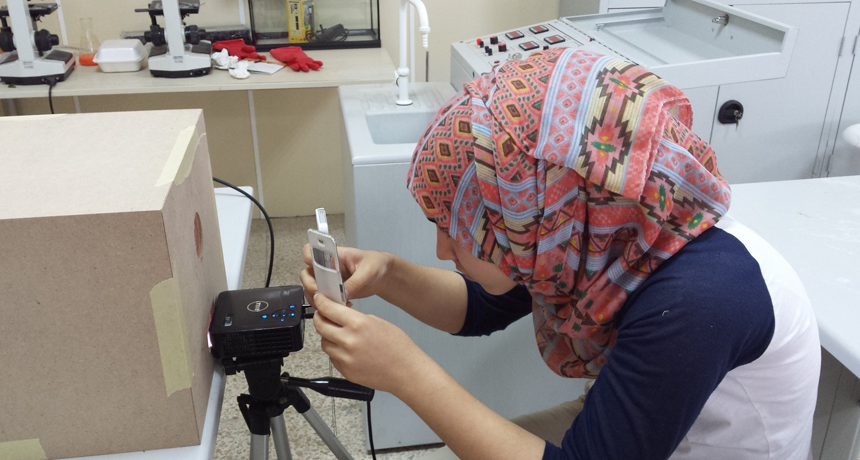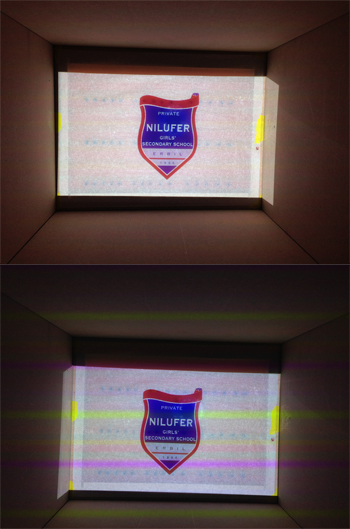Hadaia Azad Ezzulddin, a 9th grade student at Nilufer Girls Secondary School in Erbil, Iraq has come up with a solution using LED to stop movie pirating, according to a Student Science report.
Movie piracy has become a huge issue in U.S., according to data compiled by U.S. film industry groups National Association of Theater Owners (NATO) and the Motion Picture Association of America (MPAA). The two organizations estimate more than 90 percent pirated films are camcorded. Piracy is affecting people’s willingness to go to movie theaters, as the organizations find six out of 10 films are now unprofitable.
 |
|
Hadaia Azad Ezzulddin tests her IR LED concept by taking images with an iPhone. (Image Courtesy of Student Science) |
The fifteen-year-old Iraqi teen solution of using IR LED might be able to deter pirating, by messing up the camcorded images. Her research was presented at Intel International Science and Engineering Fair here on May 12, 2014. The fair is hosted by The Society for Science & the Public, which created the fair in 1950.
When the IR LED is turned on, odd colored stripes and dots appear on the recorded image, giving it poor image quality compared to video recordings under normal conditions. Since IR is invisible to the human eye it does not distract viewers during views, but the lightwould be picked up by many types of cameras, said Hadaia.
 |
|
A contrast betwen video recordings show when the IR LED is turned on (bottom) the images become distorted, the top image was filmed under normal conditions when the IR LED is turned off. (Image Courtesy of Hadaia Azad Ezzulddin) |
Hadaia tested her solution with nine types of cameras including cell phones and cam corders. When the IR LEDs were turned on the images, resulting video images were distorted and showed colored stripes.
She proposed the LEDs could flash the date and time of the movie on screen, which would appear in the illegal recordings. The information could help police and theater owners to track down potential movie pirates.













